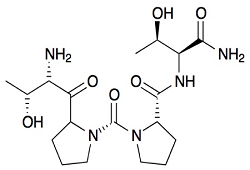Experimental Drug Shows Promise for Opioid Withdrawal Symptoms

For a long time medicines have proved the go-to solution to break addicts free of an addiction to opioids. Their effectiveness at alleviating the consequences of withdrawal and cravings thereafter rather successful. Effective they might be but they are not without flaws.
Treatment comes at the expense of a plethora of side effects. At the top of that list is the tendency to sink right back into the bowels of the addiction quitters are running away from.
These medicines alter the brain increasing the likelihood of a relapse. They trigger similar reactions to those that landed victims into rehab in the first place. It is thus like replacing one evil with a lesser one but not dealing with the problem at hand. So, there has been a need for a better alternative which has been lacking up to the now.
Rapastinel offers the ray of light in the darkness of an opioid-fueled world. Until recently it was nothing more than a little-known antidepressant. Yet, as substantiated by a rat study, its prowess in negating opioid withdrawal systems has led scientists to reinvent its primary purpose.
People are at their most vulnerable state in the window right after ditching the habit. Those first baby steps are integral to whether the patient will see out the program or not. Researchers have found rapastinel to be the perfect accompaniment during the introduction.
Addiction and complete rehabilitation hang in the balance during this “settling in” phase. It is these moments that make or break an addiction.
Cynthia M.Kuhn- a Medical Professor at Duke University- and Julia Ferrante- an undergrad at Villanova University- have unearthed proof to support these claims. They say that the new treatment can eradicate dependency completely. Additionaly, without the patient having to pay any price at all, so to speak. Ferrante believes these two reasons are why this drug will succeed where its predecessors haven’t.
Julia pointed out that while they’ve only carried out the tests on rodents so far, it continues to show great promise. Human trails are thus soon to be a reality in the immediate future. The pair will showcase their findings at this year’s Experimental Biology Meeting.
The meeting is a crucial chapter of the annual get-together held by the American Society for Pharmacology and Experimental Therapeutics. It brings together more than 12,000 scientists- and many findings- from across America. Experts table new concepts which could revolutionize the medical scene for the better.
Standard remedies currently in place are only switching one problem for another. They are passing up one frowned-upon addiction for a “more acceptable” one. Methadone and buprenorphine are currently recognized as opioid withdrawal drugs. They are themselves very addictive in nature. Moreover, they come with adverse side effects with usage spanning for months on end.
Ketamine, the other compound expected to be the better solution to the two before it, has also not lived up to expectation as well. Its non-opioid selling point won it a lot of plaudits. Its tendency to instigate hallucinations among other dire consequences did not.
The new drug put forth by Kuhn and Ferrante works almost akin to Ketamine. It is similar in working but differs in receptor attachment. Though they attach to the same receptor, rapastinel opts for a different site.
Its consequent placement resulting in subtle effects on the human physiology. It has also come to light that rapastinel failed in its initial job as an anti-depressant. Nonetheless, its absence of pivotal side effect has earned doctors’ approval everywhere. As has its tolerance thresholds which are quite high.
The drug came out on top in a showing involving a comparison with saline solution and ketamine. Withdrawal signs were visible in rats given saline or ketamine. Those taking rapastinel exhibited fewer symptoms. In fact, their signs were also to a lesser severity within the same period.
It’s still early days in the treatment so a lot still remains unknown. It clear though that it would be an intravenous form of treatment. That is if molecular level research surpasses benchmarks. An outpatient form of dispatch is also going to be the preferred means of administration.
For now, the duration of rehabilitation remains a question without an answer. Nonetheless, it’s all looking good with the study showing exemplary progress as it were.






